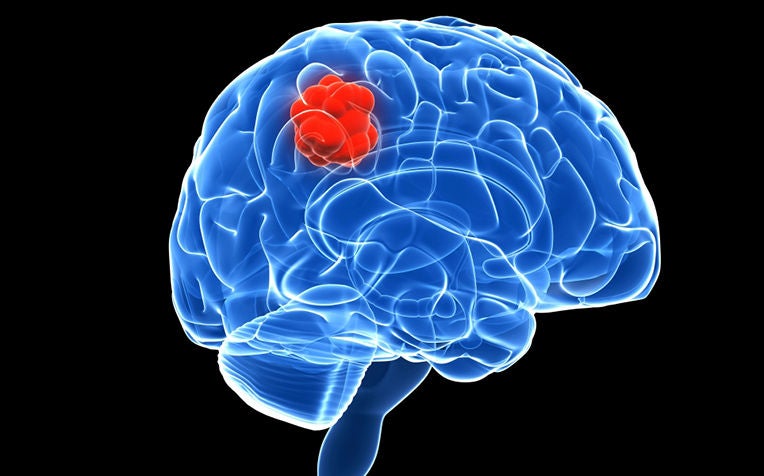
Brain tumours in a child are generally different from those in an adult.
The brain contains many different types of cells, and as a result, there are more than 100 different kinds of brain tumours which can occur. These cancers can grow in brain cells, blood vessels, nerves or even the membranes that cover the brain.
There are two broad categories of brain tumours – primary and secondary. Primary brain tumours start in the brain. They are relatively uncommon, have no known cause and are rarely genetic. Secondary brain tumours start in organs such as the lung, breast or colon, and in time, move to the brain. They are the more common category seen.
Professor Ng Wai Hoe, Senior Consultant, Department of Neurosurgery, National Neuroscience Institute (NNI), a member of the SingHealth group, said that 55 to 60 per cent of his brain cancer cases are secondary brain tumours. “In the past, patients generally succumbed to cancer before it got to their brains, but now, because they are surviving longer, cancers have time to spread to the brain.”
WHO ARE AT RISK OF DEVELOPING BRAIN TUMOURS?
As cancer cases increase in Singapore, brain tumours are also set to rise, but it is hard to tell who is susceptible. “With regards to primary brain tumours, anyone who has two first-degree relatives like parents or siblings with brain tumours would be at slightly elevated risk of this but it’s rare. In most cases of brain tumours, patients have no family history of the condition,” said Prof Ng.
In general, people who are at slightly higher risk of brain tumours include those over 65 years old, Caucasians, men, and those who have been exposed to radiation therapy treatment for cancers such as leukaemia. There is no evidence that it is caused by mobile phone use, injury, or mental stress, said Prof Ng.
BRAIN TUMOUR SYMPTOMS
Brain tumours are not as easy to detect as other common cancers, and symptoms vary according to location and size.
Function is usually affected first. If the tumour is in the section of the brain that controls vision or speech, the patient’s vision will become blurred and he will have problems finding the right words to express himself. If the tumour is located in a superficial part of the brain, it may cause seizures – the patient’s hands may jerk and he may see flashes of light.
A growing tumour may put pressure on the brain, causing headaches, nausea, vomiting and loss of appetite. “Any constant persistent headache with increasing severity, especially in the morning, warrants investigation,” said Prof Ng.
The increase in pressure can also lead to swelling of the nerves around the eyes. Prof Ng said: “I recently operated on a patient who had gone for a routine health screening. The doctor who examined his eyes noticed that the nerves around his eyes were swollen. A scan revealed that he had a brain tumour.”
However, Prof Ng said that many symptoms of brain tumours may not actually be caused by brain tumours, but by other illnesses. “It’s important to see a doctor if you have symptoms that persist or are bothersome.”
Brain tumour treatment
Treatment for brain tumours is similar to that of other cancers – a combination of surgery, radiation and chemotherapy.
Benign tumours, which are generally slow-growing, are curable, but the worldwide survival rate of the most serious malignant brain tumours ranges from 12 to 14 months.
Sometimes, patients ask the surgeon to remove the whole tumour but this may not be advisable. As the brain is a delicate and complex organ, one wrong move can result in the loss of faculties such as speech or limb movement.
Prof Ng said: “You can remove anything from the brain, but at what risk? The surgeon must do the most aggressive surgery with minimum injury, so that the patient gets the survival benefits without compromise to his ability to function.”
New Imaging Technology for brain tumours
To ensure accuracy, NNI uses the latest technology, including a machine that precisely maps out every portion of the brain and a state-of-the-art MRI machine in its Operating Theatre.
The former (machine) is like a brain GPS system that allows surgeons to scan a patient’s brain in real time during surgery to locate a tumour, decide if it can be removed safely, and see what is left behind. The MRI machine allows the surgeon to perform updated scans with which to update the brain GPS system during surgery. This is similar to updating the maps used for navigation.
A team from NNI is also conducting a trial involving a special fluorescent dye: Injected into the bloodstream, it illuminates cancer cells under a special light so that surgeons can see and effectively remove more of a tumour.
NNI surgeons also perform awake craniotomy, in which a patient is wide awake during brain surgery. “This is done when a tumour is very close to a critical area which, say, controls the hand. As we are operating near the area, we ask the patient to move his hand so that we know we are not damaging the area. The moment he starts to feel a bit of weakness, we stop the surgery to prevent permanent damage.”
Prof Ng said that patients tolerate such surgery well. “No one’s complained so far and studies have shown that these patients are quite happy and comfortable during surgery.”
Ref: Q15
Contributed by

















 Get it on Google Play
Get it on Google Play